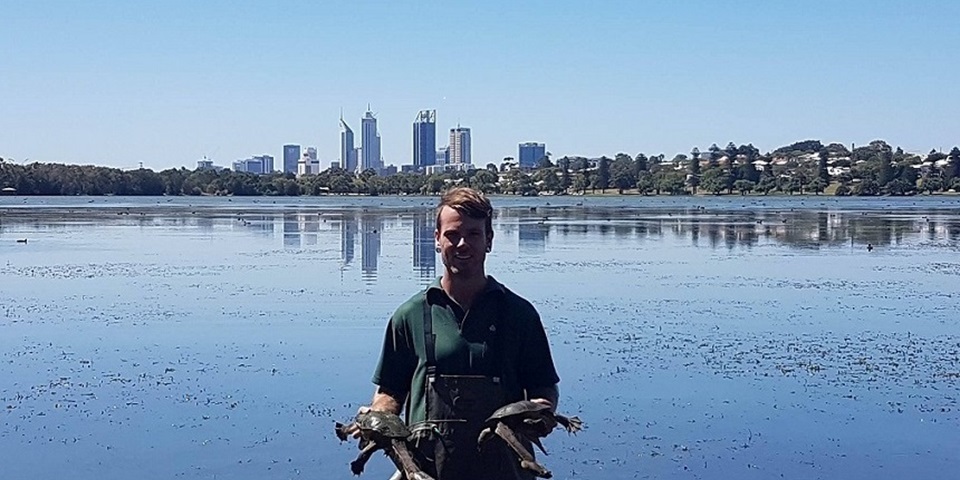News
Research aims to boost snake-necked turtle populations

Murdoch University PhD student Anthony Santoro has received significant funding to continue his investigation into whether snake-necked turtle populations in metropolitan wetlands are dwindling.
Mr Santoro, who studied urban populations of the south-western snake-necked turtle during his Honours research in 2017, will now track turtles within wetlands in the Beeliar Regional Park over the next two years.
During that time, he will assess the habitat use and timing of stages within the species’ life cycle, which will include looking for nesting sites.
His research has received funding from the Holsworth Foundation ($6750), the City of Cockburn ($2500) and Murdoch University ($5250).
The south-western snake-necked turtle is endemic along WA’s coastline, stretching around 700 kilometres from Jurien Bay to the Fitzgerald River National Park, but research suggests its populations have been declining in urban wetlands over the past few decades.
Mr Santoro said there was limited knowledge about the species, but his research last year indicated a decline in populations within the metropolitan region.
“I studied turtle populations at 35 wetlands,” Mr Santoro said. “At more than half of the sites (54 per cent) we captured fewer than 25 adult turtles. We captured juveniles at just 35 per cent, and only one hatchling was captured.”
The results suggested that recruitment of juveniles was successful in very few of the populations studied, meaning the decline in turtle numbers was likely to continue, and without careful planning in urban areas, populations could become locally extinct, he said.
Mr Santoro said his current research would increase understanding of the behaviour and habitat requirements of the species throughout its lifecycle, and if they vary between wetlands.
Tracking the movements of female turtles, in particular, and locating their nesting sites is an important part of the Beeliar project, along with tracking hatchling turtles when they emerge from their nests. He will also be examining the effectiveness of cages in reducing predation rates of nests.
The project, which is overseen by Mr Santoro’s Murdoch supervisor, wetlands ecologist Dr Jane Chambers, is being fueled by citizen science, providing the potential for the entire community to benefit.
“Anyone who wants to be involved in turtle tracking can be, and they will be contributing directly to scientific research that has the potential to prevent the species from experiencing further declines,” Mr Santoro said.
The tracking of turtles will occur in the natural environments surrounding Bibra and North Lakes, and will involve students through the Turtle Watch program through the City of Cockburn who will be gaining hands-on experience in scientific research while also learning about the amazing ecosystems of wetlands and their associated flora and fauna, Mr Santoro said.